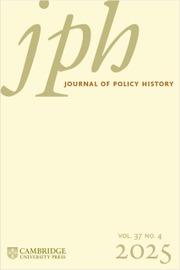No CrossRef data available.
Article contents
Introduction: Gender and Partisan Polarization in the Modern Political World
Published online by Cambridge University Press: 15 September 2025
Extract
In the years since the 2016 presidential election, questions of partisan identity and partisan polarization have burst into broader public discourse, and they have invariably been intertwined with curiosity about gender and gendered behavior, especially as it relates to partisanship and voting. What is women’s role in creating and sustaining the current political moment, or is politics as we experience it today shaped entirely by and for men? Political science as a discipline has of course tackled these questions for a much longer time, even though for some scholars, the current political moment has bestowed greater urgency on these long-running discussions and puzzles. However, even within political science, these two phenomena and their related questions have not always been examined in tandem.
Information
- Type
- Article
- Information
- Copyright
- © The Author(s), 2025. Published by Cambridge University Press in association with Donald Critchlow
References
Notes
1 Deckman, Melissa M., Tea Party Women: Mama Grizzlies, Grassroots Leaders, and the Changing Face of the American Right (New York: NYU Press, 2016)CrossRefGoogle Scholar.
2 Wineinger, Catherine N., Gendering the GOP. Intraparty Politics and Republican Women’s Representation in Congress (Oxford: Oxford University Press, 2022)Google Scholar.
3 Wagner, Regina L., “Invisible Forces: How Contextual Receptiveness to Women Shapes Women’s Representation in the U.S. Congress.” Journal of Women, Politics and Policy 40, no. 4 (2019): 445–72CrossRefGoogle Scholar.
4 Center for the American Woman and Politics, Fact Sheet: The Gender Gap: Voting Choices in Presidential Elections, 2017.
5 CNN Exit Polls 2016.

